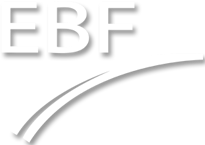Building on the submitted abstracts, we are happy to share the agenda. More detail can be found here
The agenda is not final. We still have 2 open slots. If you have an abstract fitting the session, please submit using the abstract submission form which we left active on the tab ‘Submit an abstract’
For this Focus Workshop, we look forward to your contributions, which should fit with the areas we plan to include in the workshop:
- Case studies of (potential) out of scope interpretation of the IVDR and the consequences for patient enrollment, timelines and cost of the studies impacted.
- Case studies of the in-scope interpretation of the IVDR and its value for the patient.
- Although the main focus of the Workshop is on understanding the interpretation of the IVDR in clinical studies, we also want to include a technology session on CDx development and the scientific challenges, to illustrate the complexity of a CDx (re-)development under IVDR, its related cost and value for the patient.
You can submit your abstract before 15-MARCH-2024 using this form. Inclusion into the program will be evaluated by the organising committee and is based on its fit with the meeting goals.
We will communicate acceptance of your abstract before 24-MAR-2024.
The meeting will be held at the NH Málaga, Spain.
For your travel planning, the meeting will start at 10:00 CET on June 6th and will end around 16:00 CET on June 7th.
We have negotiated conference rates with the NH hotel. To book your hotel, please use this link https://www.nh-hotels.com/en/event/ebf-spring-focus-workshop
All delegates will need to make their own hotel reservations. Hotel reservations are independent from the EBF.
To register for the meeting use this link
Registration includes entrance to the meeting, lunches/coffee breaks.
The registration fee = 565 Euro. There will be no early bird rate nor 1-day passes.
For maximum interaction, the meeting attendance is capped to 80 delegates and 4 delegates per organisation (excluding presenters, for which the registration fee will be waived)
Cancellation policy:
Cancellation needs to be done 14 days before the meeting start date.
Payment of the full conference fee will be required if cancelled after that date or on “no-show”.

